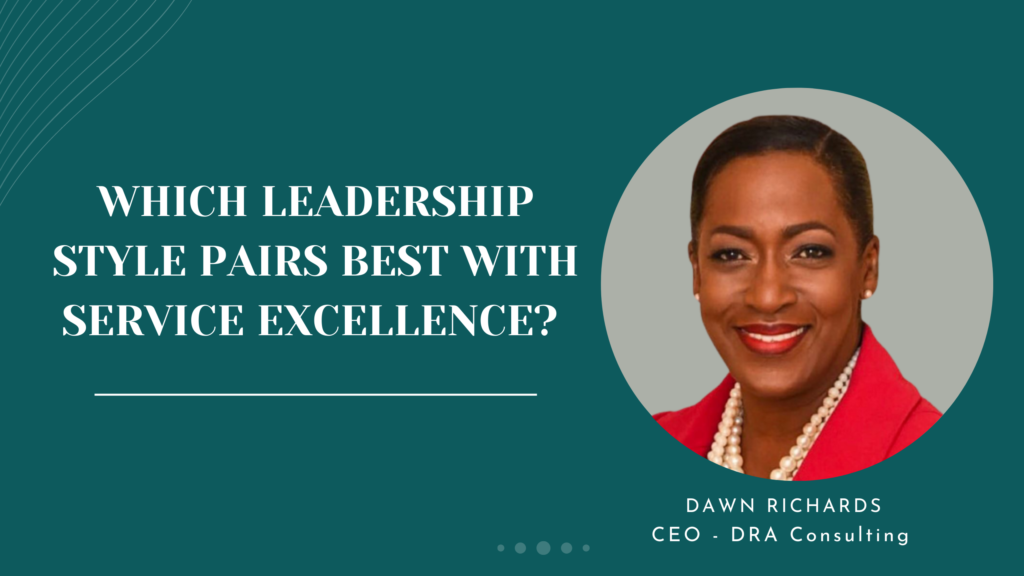As we know, the leadership imprint on a business can either build a legacy of greatness, or forestall growth and development. Too many businesses fail to make a mark in their markets, simply because the leadership drivers are not fully engaged to deliver what’s needed for competitiveness.
Of course, when leadership fails, so does service excellence. No surprises here. So I’ve selected three prominent leadership styles that impact the landing strip to service excellence. There’s the visionary, the implementer and the caretaker leader.
The visionary leader is your ideas person. He or she bubbles with ideas that often can propel the business forward in an impactful way.
The visionary leader is your ideas person. He or she bubbles with ideas that often can propel the business forward in an impactful way. This leader is charismatic, so that motivating, magnetizing and mobilizing an employee community to embrace grand ideas is a natural superpower. This type of leader creates the conditions to unleash creativity within the business, stimulating employees to feel excited and energized about the journey into the future. The visionary leader is not always good at executing though. His or her zone of genius lies in vision mobilization.
The implementer leader is about building proficiency around the work that needs to be done. This type of leader is steady and structured in his or her approach to executing goals. Leaders with this trait are dependable and predictable when it comes to delivering the deliverables. Whilst from time to time, they may be a little too task-obsessed, they may not create situations that are extreme enough to sabotage the achievement of business goals. Ideally, these leaders are well suited to the task of re-engineering businesses and business models.
The implementer leader is about building proficiency around the work that needs to be done.
The caretaker leader maintains the status quo. This individual can be counted on to establish a rhythm for the business that is so vault-like, that new ideas and fresh thinking may not automatically see the light of day. These are the leaders who cherish the “knowns” and work hard to forestall the “unknowns” that can destabilize the equilibrium of the business. Ironically, in this quest to maintain stability, these leaders place the businesses in jeopardy by restricting “dream catching” and ideation processes that allow businesses to remain relevant. Caretaker leaders potentially, can be one of the biggest risks to businesses. Why? Because they exist (often), to preserve predictability and protect the status quo. They are not on friendly terms with uncertainty.
The problem is that some caretaker leaders believe that they are protectors of business demise and may not realize that they are, in fact, custodians of outdated customs. This may lead to the very demise that they are working so hard to prevent.
The caretaker leader maintains the status quo.
Let me say here, that in some instances, caretaker leaders are essential to the sustainability of the business. In cases of receivership, mergers or other transitional scenarios for example, a caretaker leader is critical to sustaining continuity, whilst averting or preventing further destabilization.
My personal favourite is the transformational leader who has a natural ability to pair extraordinary vision, with implementation savvy. In the workspace, these transformational leaders can be found sipping morning coffee and discussing ideas with employees in lunchrooms and in informal lounge areas. Over time, these gatherings become more than watercooler conversation spots. They turn into meccas that leaders use to build culture, engage employees and sculpt solid business decisions.
So, the transformational leader who pairs vision and implementation skill, is best at supporting service excellence. He or she is a business-shaper who keeps an eye on the end game of customer success and profitability. This leader has expert level skill at keeping operational pipelines muscular and is not shy about using brute force when necessary, to move an existing business from survival mode, into one that is profitable and future-ready.
The transformational leader who pairs vision and implementation skill, is best at supporting service excellence.
This leader can speak as eloquently about accelerating the digital enablement agenda of the business, as he or she can, about the “greening” of the internal culture, or deployment of the people engagement strategy.
There is no “fluffiness” when it comes to achieving customer success. To this leader, the business has to be committed to improving the lives of the customers being served and there will be no room for fundamental customer experience errors.
Basically, customer experience thrives under transformational leaders and death by irrelevance will never apply to the businesses that they lead.

